10 start with I start with I
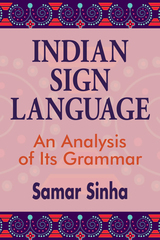
Samar Sinha presents pioneering research into the grammatical properties of Indian Sign Language (ISL), a language used by members of the Deaf community in India. This detailed and well-illustrated study describes the grammar of ISL and is supplemented by comparative and theoretical analyses in the core areas of sublexical structure, morphology, and syntax. Sinha offers a field-based, comprehensive analysis that covers topics such as
o sign formation parameters
o syllable structure
o sonority hierarchy
o semantics of space
o pluralization strategies
o phi-features
o indexing and localization
o agreement
o word order
He provides a description of the Indian Deaf community that serves to frame his analysis of ISL and highlights the need for greater awareness and acknowledgment of the language and its users. The lack of research on ISL in Indian academia has slowed efforts toward the standardization of ISL and the development of pedagogical materials. This work adds to the growing understanding of natural human language in general and ISL in particular. It also contributes to the empowerment of the Deaf community in India and will strengthen the efforts carried out by d/Deaf activists and researchers.
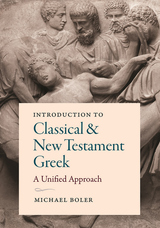


This textbook for beginning students contains 35 lessons of increasing difficulty designed to introduce students to the basic patterns of Classical Chinese and to provide practice in reading a variety of texts. The lessons are structured to encourage students to do more work with dictionaries and other references as they progress through the book.
The Introduction provides an overview of the grammar of Literary Chinese. Part I presents eight lessons on sentence structure, parts of speech, verbs, and negatives. Part II consists of sixteen intermediate-level lessons, and Part III offers five advanced-level selections. Part IV has six lessons based on Tang and Song dynasty prose and poetry.

The second edition of An Introduction to Literary Chinese incorporates recent developments in linguistics and has been expanded to include a lesson on Buddhist texts. Beginning with an overview of literary Chinese—its phonology, morphology, and syntax, as well as a short account of the nature of the writing system—the textbook then presents thirty-six lessons of increasing difficulty designed to introduce students to the basic patterns of the language and give them practice in reading a variety of texts.
Part I presents eight lessons on the basic syntactic components in literary Chinese. Each lesson begins with an overview of its topic, introduces an exemplary text, and provides a glossary, notes, and practice exercises. The sixteen lessons in Part II use increasingly long and complex texts to introduce styles of narrative and argumentation in literary Chinese and, at the same time, solidify students’ grasp of the syntax. The advanced texts in the six lessons in Part III introduce students to central authors and philosophical traditions in premodern China and broaden the process of reading to include elements of cultural and historical interpretation. Part IV has six lessons comprising important Tang and Song dynasty prose and poetic texts.
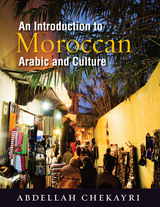
An Introduction to Moroccan Arabic and Culture and the accompanying multimedia DVD are designed to enable students to communicate effectively using Moroccan Arabic. Since Moroccan Arabic is rarely written or used in formal communication, the strength of the book lies in training learners in speaking and listening skills that can be used in everyday situations.
Upon completing this course, students should be able to:• greet people• introduce themselves• ask and reply to simple questions• use days and numbers in context• order food• shop• make appointments and reservations• give directions• talk about future plans• use common idiomatic expressions
Each chapter includes:• cultural introductions to social, religious, or cultural aspects of Moroccan society• listening comprehension exercises• vocabulary exercises• dialogues and texts• conversation practice• grammar instruction on how native speakers structure their speech• interactive and video materials to support cultural understanding, listening, speaking, and grammar explanations
The book uses Romanized transcription alongside Arabic script for the first three chapters and thereafter only the Arabic script. It also includes a glossary and answer key. It requires approximately 120 contact hours, plus 180-240 additional hours of preparation outside class. A novice student should reach the intermediate-mid level of proficiency by the end of this course.
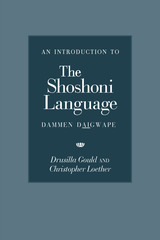
Listen to the open source audio companion to this book:
An Introduction to the Shoshoni Language Chapter 1
An Introduction to the Shoshoni Language Chapter 2
An Introduction to the Shoshoni Language Chapter 3
An Introduction to the Shoshoni Language Chapter 4
An Introduction to the Shoshoni Language Chapter 5
An Introduction to the Shoshoni Language Chapter 6
An Introduction to the Shoshoni Language Chapter 7
An Introduction to the Shoshoni Language Chapter 8
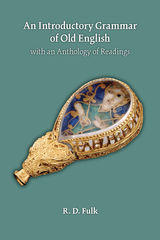
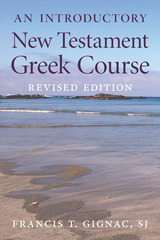
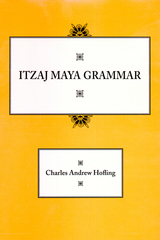
The Itzaj Maya language is a member of the Yukatekan Maya language family spoken in the lowlands of Guatemala, Mexico, and Belize, a family that includes Maya, Mopan, and Lakantum. Many classic Maya hieroglyphic texts were written in an earlier form of these languages, as were many important colonial documents. In addition to being a valuable record of ancient language, Andrew Hofling’s Itzaj Maya Grammar contributes greatly to the study of these older documents.
This exemplary grammar completes a basic documentation that began with Itzaj Maya Texts and Itzaj Maya-Spanish-English Dictionary. It’s coverage of the linguistic structures of Itzaj includes the phonological, morphophonological, and syntactic structures. Each morphological and grammatical construction is carefully explained, with additional examples of each construction included.
Itzaj Maya Grammar is a landmark contribution to the study of discourse in Maya language. When used with Hofling’s previous texts, it provides a thoroughly dynamic documentation of the language, useful to all interested in the study of Yukatejan languages or linguistics.
READERS
Browse our collection.
PUBLISHERS
See BiblioVault's publisher services.
STUDENT SERVICES
Files for college accessibility offices.
UChicago Accessibility Resources
home | accessibility | search | about | contact us
BiblioVault ® 2001 - 2024
The University of Chicago Press









